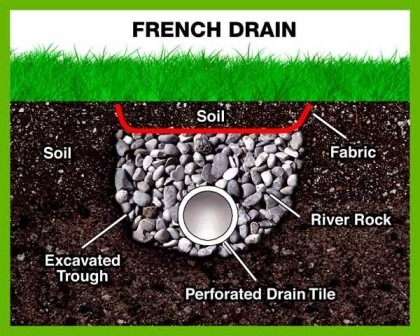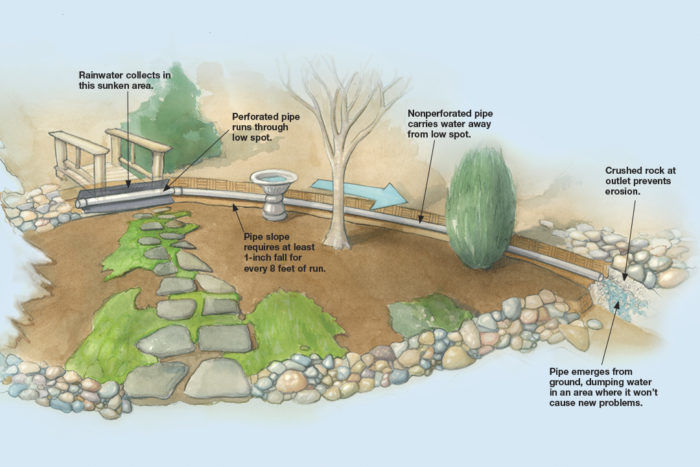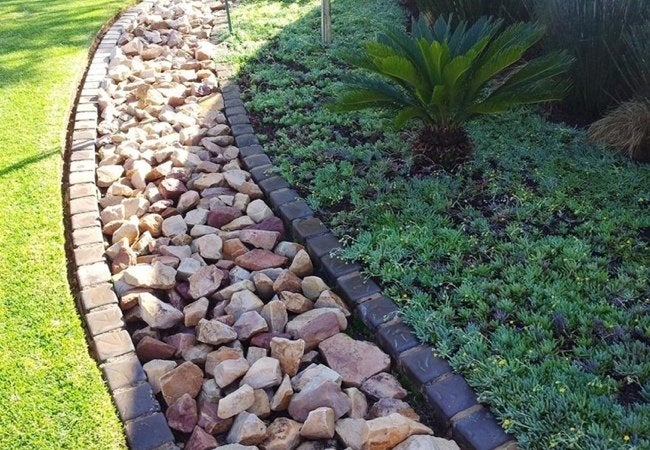If you’re looking for an easy way to fix a drainage issue in your yard, installing a French drain may be the perfect solution for you. Place the pipe under your soil and gravel layer, fill it with water, and let the system do its job of draining rainfall away from your property.
Pipe dampening is a great way to divert stormwater away from where you don’t want it and deposit it in a more desirable place. Using pipe dampening can prevent water runoff that can damage your home’s foundation and cause flooding.
If you’re interested in installing a french drain in your yard, read on for more information.
Recommended:
- 6 Common French Drain Mistakes & How to Avoid them
- Best Pump To Drain The Pool in 2022
- House & Products
Table of Contents
What is a french drain?

Remove Water
A french drain is a drainage system that uses underground channels to move water and sediment away from your home or business. By eliminating the need for surface runoff, a french drain can help improve the landscape, protect your property from flooding, and reduce the amount of water down the street.
You can avoid pooling on your property after a rainstorm by managing water at ground level with a French drain.
Prevention of Leakage
A French drain can help solve problems with basements that admit water through the foundation. The drainage system helps keep the basement dry. It prevents water from pressing against the foundation, eventually leading to leaks.
If your home suffers from water infiltration, installing a French drain may be the solution. This drainage system involves cutting a trench around the perimeter of the foundation and laying pipe in it. A sump pump is then installed to move water from within the trench to outside.
How does a french drain work?

French drains can be a helpful way to keep your property dry in the rain and snow and reduce water damage. If you have an incline or lot where it’s difficult to install traditional drainage pipes, French drains may be a good option for you. Talk to a contractor about how they can help design and install your french drain system.
Construction Design
The drainage pipe is surrounded by water-permeable fabric, covered in gravel or stones to prevent debris from obstructing the perforations, and wrapped in a layer of cloth to reduce erosion. These measures help keep your lawn clean and free from weed growth.
Adding gravel or stones to the soil helps water flow down into the drainage pipe, making it easier for water to be diverted away from areas where it may cause damage.
How to install a french drain?
The steps used to dig a trench whose bottom slopes discuss below, and that is lead to a discharge point:
- Water is drawn up from below using a manual pump or an electric drain cleaner with the trench ready. The collected water is then emptied into the trench through a discharge point.
- The pipe is connected to the pump and discharge point. When the water level reaches a certain height, the pump will turn on and discharge water into the trench.
- This water collection and filtration system will help to improve the quality of fresh water available for use by residents in need.
- The gravel prevents water from seeping through the pipe, and the soil that was brought out fills in around the edge of the trench to create a seal.
How to make a french drain?

It is typically made out of PVC or concrete, and it can be installed in different ways depending on the location. Here are some general tips to help you make a French drain:
- Estimate the size and shape of the drain – Before you start any construction, it is important to estimate the size and shape of the drain that you need. This will help you determine the type of materials you need and the amount of labor that will be required.
- Choose the materials – Once you have estimated the size and shape of the drain, you need to choose the appropriate materials. PVC or concrete is usually the most popular option, but other options are available depending on your location and preferences.
- Construct the drain – Once you have chosen your materials and installed them, it is time to construct the drain. This can be done in various ways, but it often involves pouring concrete into a trench and then connecting the trench to an existing water source or drainage system.
- Seal and finish off the French drain – Once construction is complete, it is important to seal and finish off the French drain with a layer of asphalt or concrete sealant. This will protect the drainage system against future damage and make sure that water flows smoothly through the system.
What does a french drain look like?
A French drain is a drainage system that helps evacuate water from your home or business. It’s a simple system consisting of a trench dug along your property’s natural slope and a series of pipes that connect the trench to the main sewer line.
When it rains, or there’s heavy runoff, water flows downhill through the trench and out into the sewer line.
How deep should a french drain be?
A French drain is a trench or hole dug in the ground to remove water and sediment accumulated on your property. They are commonly installed in areas where there is heavy rain, snow, or flooding.
The drain depth is typically 4 feet deep but depends on several factors, such as the type of soil and the size of the water drainage problem. The deeper the drain, the more effective it will be at removing water and sediment.
How to dig a french drain?

Digging a French drain can be a daunting task, but it can be a quick and easy process with the right tools and techniques. Here are the steps you need to take to get started:
- Choose your drainage location – Before you start digging, you first need to decide where the French drain will go. Make sure to consider the layout of the property and any obstacles that may be in the way.
- Mark out your trench – Once you have decided on your drainage location, it’s time to start marking out your trench. Use a trenching machine or a hand-held spade to create a wide enough hole for the drain pipe and deep enough to accommodate the french drain pipe. Make sure to account for any obstruction (such as trees) that may be in the way.
- Install the french drain pipe – Once your trench is ready, install the french drain pipe by drilling into the soil and fixing it in place with screws or bolts. Ensure that the pipe is angled properly so that water doesn’t accumulate in pools near your drains.
- Connect the drains – Once your french drain is installed, connect it to any other existing drains on your property by using flexible hoses or connecting rods. You may also want to add an automatic timer so that water flow is regulated according to schedule.
French drain distance from house
A French drain is a trench or an excavation, typically 6 to 12 feet (1.8 to 3.6 m) wide, dug in the ground to convey water, debris, or sewage away from the building site. The trench’s sides are sloped so that the water flows away from the building.
A French drain can be connected to a storm drain or municipal sewer system.
I hope you find this read helpful; we would be happy to hear your feedback on this article!!!

